Sedimentation Tank
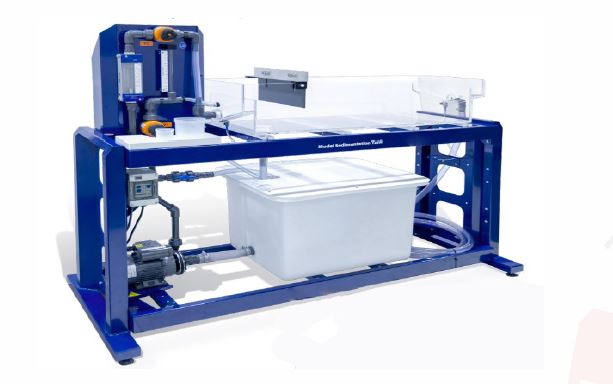
Order Code: 22236272.1R
Category: General Lab Equipment IV
Introduction: This unit has been designed to demonstrate the hydraulic characteristics and settling efficiencies of a model settling tank. Although it is difficult to bring this type of tanks to industrial size, important deductions can b...
SPECIFICATION
Introduction:
- This unit has been designed to demonstrate the hydraulic characteristics and settling efficiencies of a model settling tank. Although it is difficult to bring this type of tanks to industrial size, important deductions can be made about the way in which non-uniform flows are produced and the way in which these interact with the sedimentation characteristics when dealing with particle suspensions.
Description:
- The settling tank receives water from the laboratory network supply via a flow meter. For sedimentation studies, sludge is prepared in a tank and then pumped through a special flowmeter into the clean water stream, joining just before the inlet to the sedimentation tank.
- The already well-mixed sludge, whose concentration and flow rate are controlled, enters the tank uniformly under an inlet gate. This sludge can be comparatively analyzed by the Imhoff cone technique, or it can be dried and weighed to achieve greater precision. The tank is continuously agitated by a flow sparger device to prevent settling of solids during the experiment.
- For studies using hydraulic tracer and flow visualization, a precise inkjet system is provided, its volume being controlled and injected just prior to entry into the settling tank.
Specifications:
- A rigid acrylic sedimentation tank with a capacity of 85L-97L that can be fed with mains water or sludge. The sludge is pumped from a 120L-400L tank via a centrifugal pump. A spray device in the tank keeps the sludge in suspension
- Flowmeter in both supplies: Network water flowmeter range: 0.5-5 L/min; mud flowmeter range: 0-4 L/min
- Inkjet system to allow hydraulic tracer studies and flow visualization.
- Measurement of flow regimes by means of an ink tracer and comparison of these with idealized flow models.
- Effect of variables such as flow and position of the baffles on flow regimes.
- Measurement of sediment removal efficiency.
- LEDS for better visualization.
CONTROL SYSTEM, ACQUISITION AND DATA MANAGEMENT, COMPOSED BY CONTROL INTERFACE BOX:
- Control Interface Box with process diagram on the front panel, with the same distribution as the equipment elements, for easy understanding by the student.
- All the sensors with their respective signals are adequately prepared for the output to the computer from -10V to +10V.
- Cable for control interface box and computer
- The control elements of the equipment are permanently controlled from the computer, without the need for changes or connections during the entire test process.
- Simultaneous display on the computer of all the parameters involved in the process.
- Calibration of all sensors involved in the process.
- Real-time representation of the system response curves
- Storage of all process data and results in one file
- Graphical representation in real time of the responses in the system/process
- All the values of the actuators can be changed at any time from the keyboard, allowing the analysis of the curves and responses of the entire process.
- Shielded and filtered signals to avoid external interference
- PID control in real time with flexibility of modifications of the PID parameters in real time of the parameters that intervene in the process simultaneously
- Proportional control, integral control and derivative control, based on the real mathematical formula of the PID, by changing the values at any time, of the three control constants (proportional, integral and derivative constants).
- Control in real time with flexibility of parameter modifications from the computer keyboard, at any time during the process.
- Real-time control for pumps, compressors, resistances, control valves, etc.
- Open control allowing modifications at any time and in real time, of the parameters involved in the process, simultaneously.
- Three levels of security, one mechanical in the equipment, another electronic in the control interface and the third in the control software.
CONTROL SOFTWARE, DATA ACQUISITION AND DATA MANAGEMENT :
- Compatible with current Windows operating systems. Graphic and intuitive simulation of the process on the screen. Compatible with industry standards.
- Recording and display of all process variables automatically and simultaneously.
- Flexible, open and multicontrol software developed with current graphic window systems, acting on all process parameters simultaneously.
- PID control to analog and digital
- Menu for the selection of the PID and the set point required in the entire working range.
- Handling, manipulation, comparison and storage of data
- Sampling rate of 250 KS/s
- Calibration system for the sensors involved in the process.
- Allows the entry of the alarm status and the graphic representation in real time
- Comparative analysis of the data obtained, after the process and modification of the conditions during the process.
- Open software allowing the teacher to modify texts, instructions, teacher and student passwords to facilitate the control of the teacher over the student, and that allows access to different levels of work.
Demo Possibilities:
- Measurement of flow short circuits and dead space using a tracer
- Comparison of actual flow regimes with idealized flow models
- Effect of flow and position of the deflectors on the dispersion
- Measurement of efficiencies in the removal of sediments and their relationship with the hydraulic characteristics
- Effect of solids concentration on the efficiency of the separation process
Technical characteristics:
- Sedimentation tank: 1180x350x250mm or 900x110x300mm or 1100x400x250
- Sediment tank capacity: 85L-400L
- Water flow meter range: 0.5-5 L/min or o.1 – 25 L/min
- Slurry Sediment Flow Meter Range: 0-2 L/min
- Pump flow: 25 L/min with a head of 5m – 75l/h
- Motor: 0.1Kw
Requirements :
- Electrical supply : 220V 1HP 60HZ
- Water supply: 5 L/min 1 bar
ADDITIONAL COMPONENTS
- Data acquisition, software and all necessary connection cables.
- Powdered calcium carbonate
- Ink
Overall Dimensions (Approx):
- Height : 1.54m-1.81m
- Width : 1.90m to 2.20m
- Depth : 0.76m -0.95m

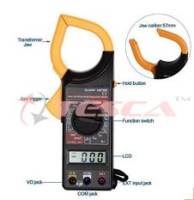
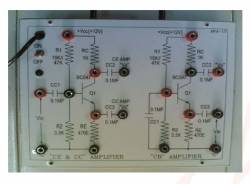
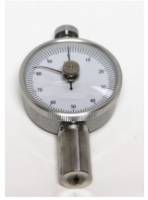
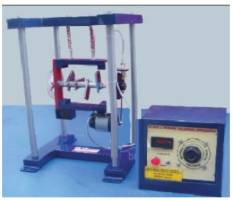
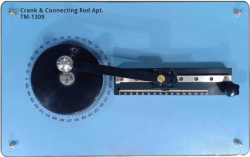
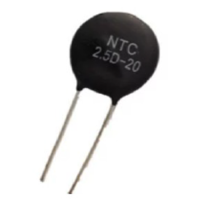
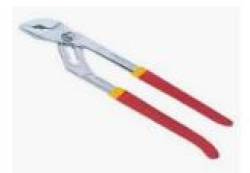
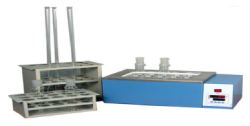
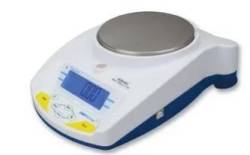

 91-9829132777
91-9829132777